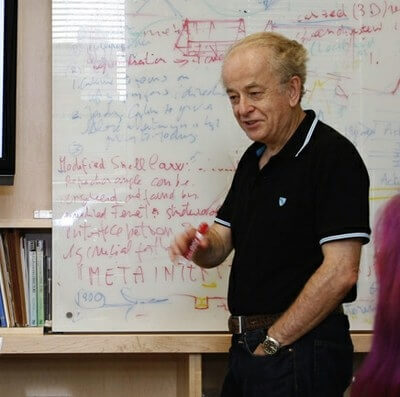News
CONTACT: Caroline Perry at 617-496-1351
Cambridge, Mass. - October 14, 2010 - Federico Capasso, Robert L. Wallace Professor of Applied Physics and Vinton Hayes Senior Research Fellow in Electrical Engineering, has won the 2010 Julius Springer Prize for Applied Physics.
He will share the honor with Henri Lezec, Project Leader in the Center for Nanoscale Science and Technology Nanofabrication Research Group at the National Institute of Standards and Technology.
The Editors-in-Chief of the Springer journals Applied Physics A and Applied Physics B recognized Capasso for his "pioneering achievements in nanoscale physics and applications." The award will be presented at a one-day "Julius Springer Forum on Applied Physics" to be held at Stanford University on October 16.
Capasso received the Doctor of Physics degree, summa cum laude, from the University of Rome, Italy, in 1973. After a 27-year career at Bell Laboratories, he came to Harvard in January 2003.
Capasso’s research in nanoscale science and technology has covered a broad range of topics starting with his pioneering research on bandgap engineering of artificially structured semiconductor material and devices. This research culminated in the invention and first demonstration by Capasso and his group at Bell Labs in 1994 of quantum cascade (QC) lasers. Capasso showed that by varying the thickness of layers in the active region, it is possible to select the wavelength at which a QC laser will emit light, customizing it for a specific application. Other highlights of his research include the investigation of the Casimir effect (the attraction between any pair of macroscopic bodies due to quantum fluctuations of vacuum) and in particular the first measurement of a repulsive Casimir. He has also worked on plasmonics, demonstrating laser antennas capable of creating high-intensity nanoscale light spots for optical recording and highly collimated beams.
He has been widely honored for his interdisciplinary research in fields such as materials science, solid state physics, electronics, and photonics. His honors include membership in the National Academy of Sciences, the National Academy of Engineering, and the American Academy of Arts and Sciences. This past July, Capasso earned the 2010 Berthold Leibinger Zukunftspreis (the future prize) for excellent research on the application or generation of laser light.
In 2005 he received, jointly with Nobel Laureate Frank Wilczek (MIT) and Anton Zeilinger (University of Vienna), the King Faisal International Prize for Science for his research on QC lasers. The citation called him “one the most creative and influential applied physicists in the world.”
The Institute of Electrical and Electronic Engineers (IEEE), the world’s largest technical professional organization, also awarded Capasso the 2004 Edison Medal for “a career of highly creative and influential contributions to heterostructure devices and materials.”
Past Harvard affiliates who have won the Julius Springer Prize for Applied Physics include Hongjie Dai '94 (Ph.D.) and Peidong Yang '97 (Ph.D.), who both received it in 2004, and Eli Yablonovitch '72 (Ph.D.), who received it in 2001.
Cutting-edge science delivered direct to your inbox.
Join the Harvard SEAS mailing list.
